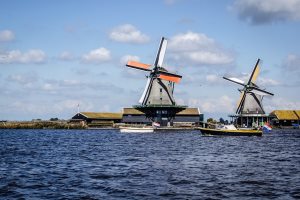Sensors in the water industry: The next step to IoT cities

Sensors in the water and wastewater treatment industries are an emerging technology market area, forecast to grow to $2Bn (€1 billion)+ in 2030. These sensors will make up the wider application of IoT devices in cities, and the hype around them is growing.
The sensors required are already in use in other industries, but now are being adopted by water and wastewater companies at a municipal level. IDTechEx has analysed this market in its new report “Sensors in the Water and Wastewater Treatment Industries 2020-2030“.
What is the industry?
The WHO said in 2019 that 71% of the world’s population have access to clean water. There is a direct impact on the consumer, and many companies must meet targets and goals set by their country or industry body. However, unlike the oil and gas industry, the water industry is behind with its uptake of digitisation and in the monitoring of networks in many countries across the globe. With water shortages occurring across some countries – e.g. Cape Town, South Africa in 2018 – there is a real need to better monitor the usage, supply, and treatment of both supply water and waste-water networks. To achieve these goals, the water industry must digitise, and use smart sensors across all areas of its water networks.
Many water and wastewater networks are currently not digitised. They use analog or slow systems to collect samples, analyse data, and provide data for companies to use. These results are used to meet pollution requirements, policy limits, and ensure that the treatment of both water and wastewater plants are running correctly. The introduction of sensors into these industries can lead to increases in efficiency for the plants, reduction in pollution from contaminants or waste materials, and more.
Where are the synergies?

Dr Charlotte Coles
There are a number of industries which currently require devices to measure and monitor wastewater. For example, semi-conductor manufacturers have to ensure that their wastewater has no trace metals in their wastewater. Chemical or pharmaceutical plants must ensure no trace chemicals. This also applies to industries such as food and beverage, clothes manufacturing, and pharmaceutical plants.
Any process which has water during its manufacturing process, cooling and heating process, or similar, and then exits this waste to the environment have to ensure that their plant does not contaminate, pollute, or cause damage to this environment. They, therefore, require sensors to monitor their plants. These same sensors can be used in municipal water and wastewater plants to monitor contaminants in the water and wastewater networks.
“By 2030, the sensor market in water and wastewater networks is predicted to be over $2Bn (€1 billion)”
Sensors in the Water and Wastewater Treatment Industries 2020-2030
Why now?
Smart meters for gas and electricity have greatly benefited those industries, reducing contact and allowing the measurement of more accurate readings. This saves the customer money as they are paying for utilities they use. Typically, water is not monitored in this way. By greater monitoring of the entire network, it can become more efficient. For example, if a municipal water company wants to identify the source of a contaminant, multiple sensors can narrow down the location.
It can also create more accurate records of water use, allowing pressurisation of water pipes to occur when needed, reducing damage from over pressurising the system. Water and wastewater companies are adopting these technologies, and therefore it is an exciting area to diversify into.
What parts of the water and wastewater networks does it apply to?
As there are many stages within the water and wastewater networks, with many properties to measure and monitor. This also means that there are many points in the system where data needs to be collected and analysed to ensure the correct treatment and processes are applied. Sensors in the Water and Wastewater Treatment Industries 2020-2030 describes the methods used to monitor these areas. In general, there are five key areas:
o Storage (e.g. tanks)
- Example properties: Water level, pressure, temperature
o Pipes, Network
- Example properties: pressure, flow speed, level measurements, leaks
o Pipes, Distribution
- Example properties: pressure, flow speed, level measurements, leaks
o Treatment – Supply water
- Example properties measured: pH, chlorine, pressure, temperature, flow speed, level measurement
o Treatment – Wastewater
- Example properties measured: Pressure, temperature, flow speed, level measurements, chemical properties
What about COVID-19?
As an emerging technology, digitising and adding sensors to the water and wastewater networks may have both benefit and hindrance. Hindrance, as companies may not wish to spend large sums on new sensors, pipes, or technology, and the barriers for entry into the water and wastewater networks is already high.
The benefit of adopting sensors into the networks outweigh these barriers. There is a real need for remote monitoring, it removes the need for maintenance staff to check pipes as regularly, or to collect samples for lab monitoring. It speeds up the identification of pollution events reduces fines incurred by the water companies. It improves efficiency of the treatment plants. It provides a better service for customers. A steep investment, but the dividends pay off for many years to come.
What will I learn from the report?
This report includes market forecasts, player profiles, investments, and comprehensive company lists. This report is an essential read for those looking for a deep understanding of the use of sensors in the water and wastewater industries.
Comment on this article below or via Twitter @IoTGN
